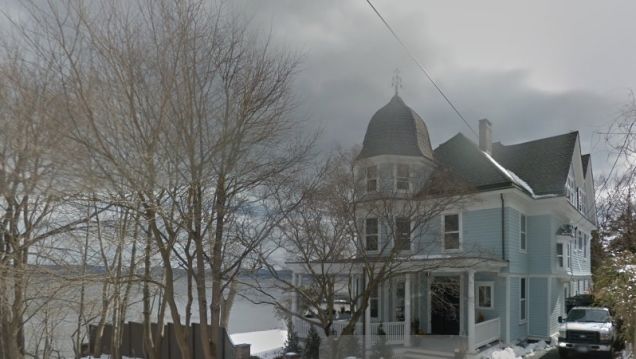This New York Supreme Court case’s real name is Stambovsky v Ackley, but its nickname, “the Ghostbusters ruling”, is way catchier — and way more descriptive. Not to mention accurate, as the most famous part of the decision contains the phrase: “as a matter of law, the house is haunted.”
Image: Google
The story goes like this. In 1989, a woman named Helen Ackley decided to sell her house, a striking, circa-1890 Queen Anne Victorian perched right on the Hudson River in Nyack, New York. It had five bedrooms, three and a half baths and three poltergeists.
That last bit of info was something Ackley had widely publicised in a 1977 Reader’s Digest article (titled “Our Haunted House on the Hudson”) as well as in the local newspaper on more than one occasion. The house became something of a local landmark, included on a tour of Nyack’s supernatural hot spots.
This was not another Amityville Horror situation, however. The family lived in the house for over 20 years, and the spirit that Ackley described in 1990 to the New York Times didn’t seem at all hostile. Quite the opposite, in fact:
“He was sitting in midair, watching me paint the ceiling in the living room, rocking and back forth,” she said. “I was on an 8-foot stepladder. I asked if he approved of what we were doing to the house, if the colours were to his liking. He smiled and he nodded his head.”
But despite courting all that publicity over the years, Ackley and her real estate agent failed to tell buyer Jeffrey M. Stambovsky that the home had a spooky reputation. He wasn’t from Nyack, and had no idea he’d just added a haunted house to his portfolio until it was too late. Unable to get his deposit back, he took Ackley to court, arguing the house’s ghosts (real or imagined, friendly or otherwise) affected both its value and its potential for resale.
The New York Appellate Court declared that “as a matter of law, the house is haunted” because Ackley had proclaimed it to be true in multiple newspaper and magazine articles — whether or not there was an actual ghost was moot. But this section of the court’s official decision is also notable, for obvious reasons:
From the perspective of a person in the position of plaintiff herein, a very practical problem arises with respect to the discovery of a paranormal phenomenon: “Who you gonna’ call?” as a title song to the movie “Ghostbusters” asks.
Applying the strict rule of caveat emptor to a contract involving a house possessed by poltergeists conjures up visions of a psychic or medium routinely accompanying the structural engineer and Terminix man on an inspection of every home subject to a contract of sale…
In the interest of avoiding such untenable consequences, the notion that a haunting is a condition which can and should be ascertained upon reasonable inspection of the premises is a hobgoblin which should be exorcised from the body of legal precedent and laid quietly to rest.
In the end, Stambovsky got half of his deposit back, the NY Appellate Court ruled that sellers would have to disclose if their home had a g-g-g-ghost and Ackley ended up having no trouble selling her Victorian mansion, since it turns out there are plenty of people who actually want to own a haunted house. And as it happens, nobody who’s lived there since has reported any bumps in the night. In 2015, the house was sold for $US1.7 million ($2.2 million) by its then-owner, singer-songwriter Ingrid Michaelson.
